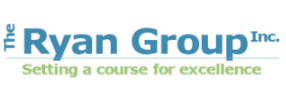Executing Change in the Organization: The Consultant's Toolkit
The Consultant's Role
The consultant's primary role is one of a facilitator, trusted advisor, and subject-matter expert. Using the Consultant's Toolkit will enable the consultant to make the most of the organization's potential abilities, determine and guide the use of appropriate resources, present alternative solutions and options, and successfully implement a change initiative in a client organization.
The Toolkit's Structure
When using the toolkit, the consultant brings a proven change management process with
Structure – in the form of a process model
Organization – in the form of templates and agendas
Insight – in the form of knowing what to do, when
Outcomes – in the form of deliverables and work product
How to Use the Toolkit in Your Consulting Practice
The Toolkit is designed to support the consultant's practice by providing easy to use resources for organizations going through or anticipating change.
Organizations Who Will Benefit From the Change Toolkit Materials and Processes
Commercial Enterprises
Strategic Business Units
Professional Services Firms
Not-for-profit Organizations
Government Agencies
Municipalities
Churches
Academic Institutions
and numerous others
Circumstances That Provide Opportunity to Employ the Change Toolkit
Mergers and Acquisitions
Reorganizations
Consolidations
Major Program or Project Implementations
Business Refocus
Global Expansion
Downsizing
A Companion to Strategic Planning
New or Change in Senior Management
Culture Shift
and others
The Consultant as Train-the-Trainer
For some projects, the consultant may need to take on the additional role of train-the-trainer. If this is a requirement, the consultant should use the "Tabletop Simulation for Change" resource described later in this guide (available from Pfeiffer). The resource is designed to train external consultants, internal consultants, managers, and change process owners, such as managers and supervisors.
Introduction to the Concepts of The Consultant's Toolkit
The underlying concepts encompassing the consultant's toolkit are simple and logical. The approach and execution is fresh, innovative, and compelling. The concepts are
Plan – By defining the future, its assumptions, challenges, and priorities
Act – By considering complexity, readiness and behaviors
Adopt – By localizing, internalizing, and sustaining the change
Approach
The consultant's toolkit encompasses a process of gathering perceptions, viewing the change landscape, establishing linkages to business goals, examining the internal and external environment, implementing the new practices and behaviors, adopting and internalizing the change, and tracking results and outcomes.
The audiences addressed in the toolkit are leadership, the change management team, the change process owners, and the organization's individual contributors.
Acceptance and Rejection of Change
Some constituents will view change as a challenge, an energy creator, and a motivator. Others will view change as a threat, an energy sapper, and a few as a demotivator. Some will drive change, some will enable change, while others will be hesitant and even resist change. The consultant's toolkit provides the resources to identify and address each of these issues.
To Purchase
Go to www.wiley.com and put Wayne R Davis is the search field.
ISBN: 978-0-7879-9666-6 Loose leaf binder, 129 pages, $319.00 (Prices subject to change without notice. Check www.wiley.com for current price).
Contact
The Ryan Group, Inc.
(214) 613-2582
Wayne Davis
wayne.davis@ryangroupinc.com

The Ryan Group, Inc.
Powered by ContentShelf.com